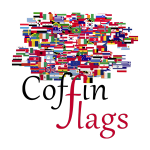Description
 Uganda, officially the Republic of Uganda, is a country in East-Central Africa. The southern part of the country includes a substantial portion of Lake Victoria, shared with Kenya and Tanzania. Uganda is in the African Great Lakes region. Uganda also lies within the Nile basin and has a varied but generally modified equatorial climate. Uganda takes its name from the Buganda kingdom, which encompasses a large portion of the south of the country, including the capital Kampala. The people of Uganda were hunter-gatherers until 1,700 to 2,300 years ago when Bantu-speaking populations migrated to the southern parts of the country. The official languages are English and Swahili, although “any other language may be used as a medium of instruction in schools or other educational institutions or for legislative, administrative or judicial purposes as may be prescribed by law.” Luganda, a central language, is widely spoken across the country, and several other languages are also spoken including Runyoro, Runyankole, Rukiga, Luo and Lusoga.
Uganda, officially the Republic of Uganda, is a country in East-Central Africa. The southern part of the country includes a substantial portion of Lake Victoria, shared with Kenya and Tanzania. Uganda is in the African Great Lakes region. Uganda also lies within the Nile basin and has a varied but generally modified equatorial climate. Uganda takes its name from the Buganda kingdom, which encompasses a large portion of the south of the country, including the capital Kampala. The people of Uganda were hunter-gatherers until 1,700 to 2,300 years ago when Bantu-speaking populations migrated to the southern parts of the country. The official languages are English and Swahili, although “any other language may be used as a medium of instruction in schools or other educational institutions or for legislative, administrative or judicial purposes as may be prescribed by law.” Luganda, a central language, is widely spoken across the country, and several other languages are also spoken including Runyoro, Runyankole, Rukiga, Luo and Lusoga.
The flag of Uganda was adopted on 9 October 1962, the date that Uganda became independent from the British Empire. It consists of six equal horizontal bands of black (top), yellow, red, black, yellow, and red (bottom); a white disc is superimposed at the centre and depicts the national symbol, a grey-crowned crane, facing the hoist side. The three colours are representative of African peoples (black), Africa’s sunshine (yellow), and African brotherhood (red being the colour of blood, through which all Africans are connected). The grey-crowned crane is fabled for its gentle nature and was also the military badge of Ugandan soldiers during British rule. The raised leg of the crane symbolises the forward movement of the country.







